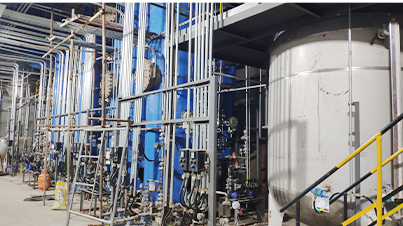Differences Between Flocculants and Coagulants in Water Treatment Processes
Flocculant vs. Coagulant Understanding the Difference and Applications
Water treatment is a vital process in various industries, ensuring water is safe and clean for consumption, production, and various applications. Two crucial agents commonly used in this process are flocculants and coagulants. While often used interchangeably, they serve distinct functions and play different roles in the water treatment process. Understanding their differences is essential for optimizing water treatment practices.
Definitions and Functions
Coagulants are chemical agents that facilitate the aggregation of small particles in water by neutralizing their charges. When particles are suspended in water, they often carry a negative charge, preventing them from clumping together. Coagulants, typically metallic salts such as aluminum sulfate, ferric chloride, and polyaluminum chloride, are added to water to neutralize these charges, causing particles to collide and stick together—an initial step in the removal of impurities. This process is known as coagulation.
Flocculants, on the other hand, are agents that aid in the formation of larger aggregates, or flocs, from the smaller coagulated particles. Once coagulation has occurred, flocculants, often polymer-based compounds such as polyacrylamide, are introduced to promote the agglomeration of these small clusters into larger, more easily removable masses. The primary role of flocculants is to enhance the settling of solids in the treatment process, making it easier to separate impurities from the water. This process is referred to as flocculation.
The Process
The water treatment process generally begins with coagulation. After the coagulant is added to the water, rapid mixing occurs to ensure even distribution. This stage allows the coagulant to interact with the suspended particles, neutralizing their charges and initiating aggregation. As the particles begin to clump together, a slow mixing phase ensues. During this phase, flocculants are added to encourage further coalescence, resulting in the formation of larger aggregates, or flocs.
flocculant vs coagulant

The treatment process then advances to sedimentation, where the heavy flocs settle at the bottom of the treatment basin due to gravitational forces. The clear water above the settled solids can then be further processed or retrieved as treated water. In some cases, filtration may follow to remove any remaining particles, ensuring the water meets required quality standards.
Applications
Coagulants and flocculants find extensive applications across various industries, including municipal water treatment, wastewater management, pharmaceuticals, and food and beverage production. In municipal water treatment, coagulants are crucial for removing suspended solids, bacteria, and other impurities, thereby improving water clarity and quality.
In wastewater management, both coagulants and flocculants play a critical role in effectively treating industrial effluents. By removing contaminants, they help minimize environmental impacts and enhance water reusability. In the food and beverage industry, these agents ensure that water used in production processes meets health and safety standards.
Flocculants are particularly beneficial in industries that require the separation of solids from liquids, such as mining and paper production. They significantly improve the efficiency of sedimentation and filtration processes, allowing for higher-quality products and better resource recovery.
Conclusion
In conclusion, while coagulants and flocculants work together in the water treatment process, they have unique roles that are integral to achieving effective purification. Coagulants initiate the aggregation of suspended particles by neutralizing their charges, while flocculants further enhance this aggregation to form larger flocs for easier removal. Understanding the distinctions between these two agents is critical for optimizing water treatment processes, ensuring efficiency, and maintaining compliance with environmental regulations. As water scarcity continues to be a global challenge, effective water treatment practices utilizing both coagulants and flocculants will play a crucial role in sustainable water management.
-
The Power of Isothiazolinones in Modern ApplicationsNewsMay.08,2025
-
Flocculants in Water TreatmentNewsMay.08,2025
-
Flocculants and Chemical Solutions: What You Need to KnowNewsMay.08,2025
-
Flocculants and Chemical Solutions: A Growing IndustryNewsMay.08,2025
-
Essential Chemicals: Polymaleic Anhydride and MoreNewsMay.08,2025
-
Acrylic Polymers: Essential Solutions for IndustryNewsMay.08,2025





